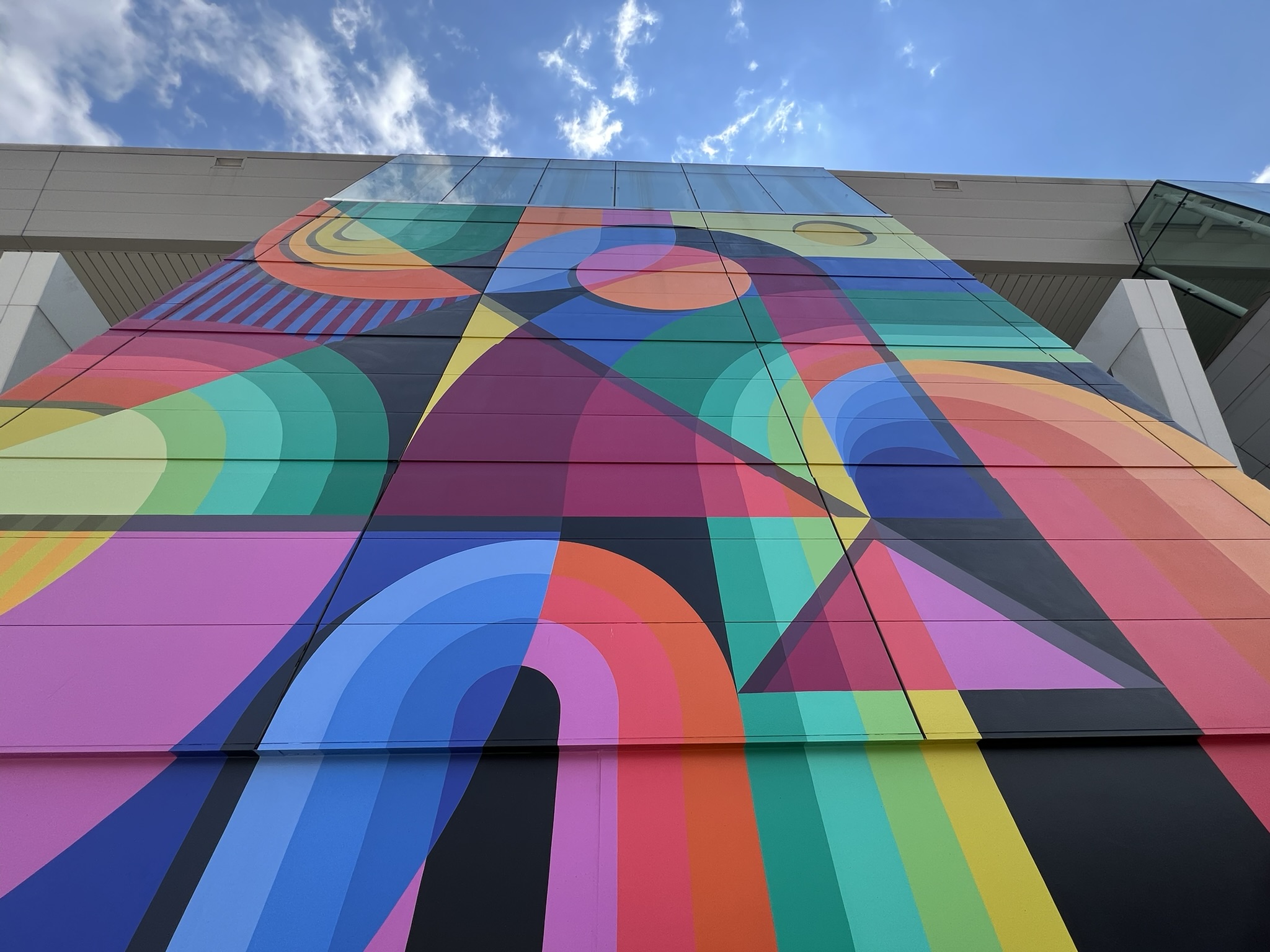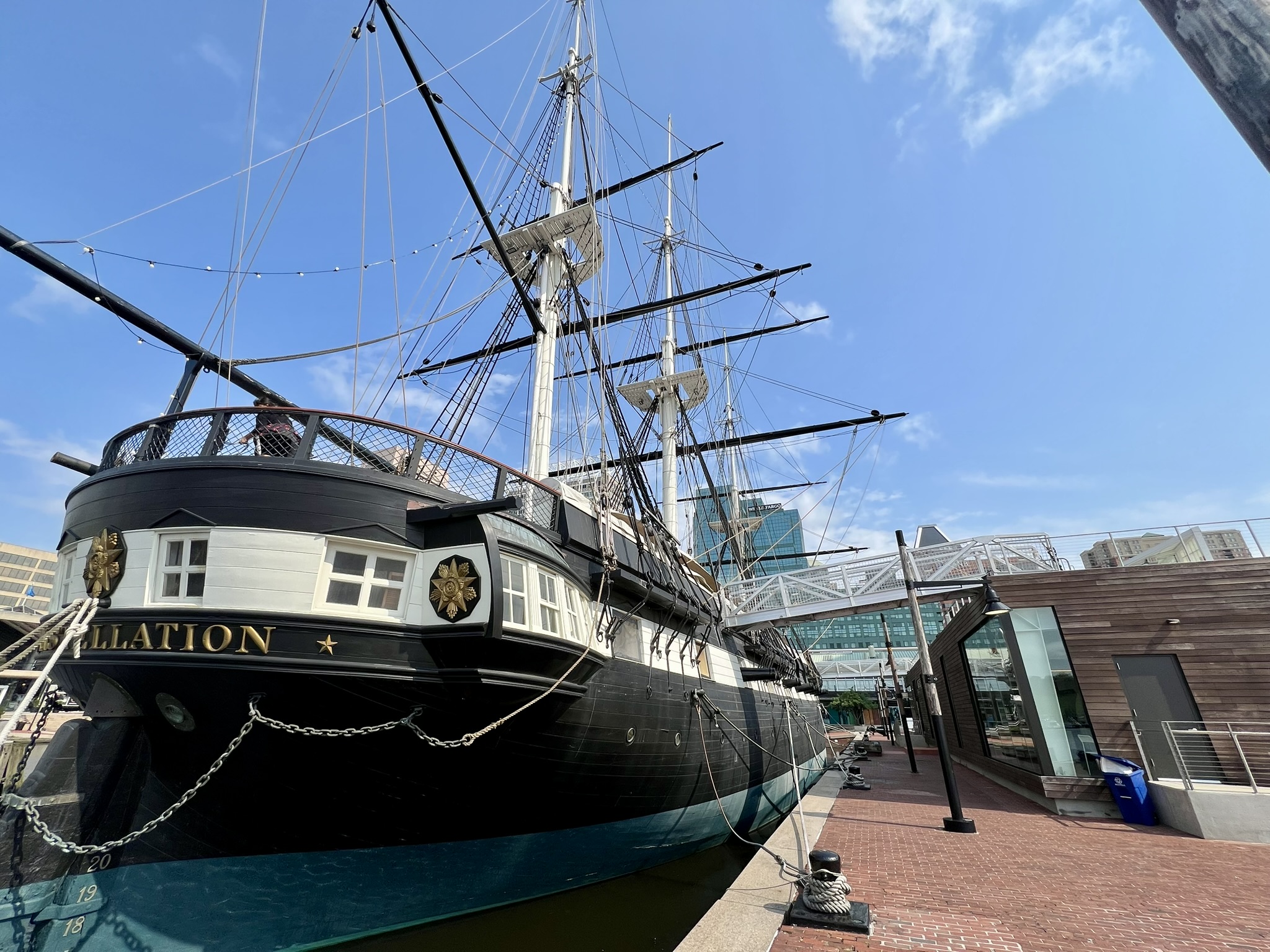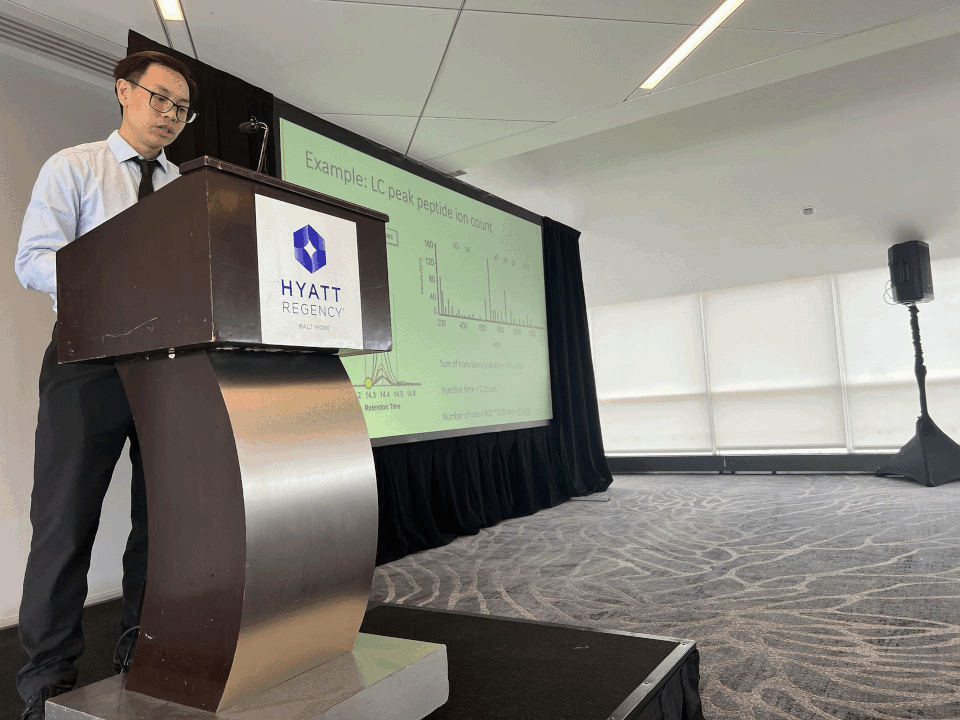Thanks to everyone who joined us in Baltimore for the Skyline User Group Meeting at ASMS 2025. It was great to meet with all of you passionate Skyline users and share the opportunity to experience varied presentations about recent work enabled by (and for) Skyline software!
Below are links to the speakers' pages with options to view their slides or watch their presentations as [video]s. At the bottom of this page, you will also find some photos from the event.
Thanks especially to all the wonderful speakers who volunteered their time and effort to share great presentations ranging from imputing missing data, to Skyline workflow tools, to pharmaceutical detection in water sources, and much more!
We hope these presentations long outlast the event itself, as previous years have.
Thank you! -- Brendan MacLean and Mike MacCoss, Event hosts
Michael J. MacCoss, Ph.D. (University of Washington): Introduction and event host
Brendan MacLean (MacCoss Lab, University of Washington): Status of the Skyline open-source software project 17 years after its inception [video]
The Skyline project started just after ASMS 2008 as a 2-year effort to bring better SRM/MRM software tools to the NCI-CPTAC Verification Working Group that could support the variety of mass spectrometers in use in participating laboratories. Nearly 15 years later, the Skyline project is a thriving proteomics community open-source collaboration supporting 6 mass spec instrument vendors, integrated with a wide variety of external software, with thousands of users worldwide and many thousands of instances started each week. (More info...)
Britt Lee (Thermo Fisher Scientific): Lipidomics at Scale: Skyline-Powered Targeted Workflows on the Stellar Mass Spectrometer [video]
The growing prevalence of metabolic disorders underscores the need for high-throughput lipidomics workflows that enable comprehensive, precise, and selective lipid quantification. Structurally related lipids with varying fatty acid compositions play distinct biological roles, making highly selective analysis essential for risk prediction, diagnostics, and translational research. Skyline provides a powerful and accessible platform for developing and optimizing targeted lipidomics methods, making it an ideal tool for nominal mass instruments like the Thermo Scientific Stellar MS. (More info...)
Matt Champion Ph.D. (University of Notre Dame): Skyline Workflows to Quantify N-terminal Acetylation Peptidoforms While Preserving Protein Abundance in Bottom-up Proteomics [video]
N-terminal Acetylation (N𝛼TA) is the co-and post-translational addition of an acetyl group to the N-terminus of a protein by N-acetyl transferases (NATs). It is a ubiquitous, but under-studied modification with a variety of roles in protein stability, trafficking and recognition. In mycobacteria, N𝛼TA is associated with increased virulence and several virulence factors are differentially acetylated with PTM.
(More info...)
Emily Crawford (University of North Carolina): Assessing Antidepressant Pharmaceuticals in the Environment through the Development of a Multidimensional Liquid Chromatography-Ion Mobility Spectrometry-Mass Spectrometry Library [video]
Antidepressant (AD) medications are globally prescribed to alleviate depression symptoms by altering neurotransmitter reuptake in the brain. Up to 90% of an orally administered AD dose is excreted from the body as either the parent chemical or pharmacologically active metabolites which remain active even at low concentrations. These molecules are not currently removed by wastewater treatment plants (WWTPs), posing great environmental and ecological concerns. To understand exposure risks, we developed methods to quantify 26 parent ADs and 16 metabolites in surface water with liquid chromatography, ion mobility spectrometry, and mass spectrometry (LC-IMS-MS).
(More info...)
Jonathan Krieger Ph.D. (Bruker): Improved targeted quantitation with diagonal-PASEF using Skyline [video]
Combining Data-Independent Acquisition (DIA) with Trapped Ion Mobility Separation (TIMS) reduces sample complexity by providing an additional dimension of separation, thereby increasing overall system peak capacity. This scan mode, termed dia-PASEF, employs fixed quadrupole isolation windows for ion selection in both the m/z and mobility panes. To further enhance the analytical performance, diagonal-PASEF has been developed, which optimizes the acquisition of the precursor ion cloud by continuously tracking its diagonal shape.
(More info...)
Chris Hsu (University of Washington): Bridging the Gap in Mass Spectrometry Hardware Evaluation: Ion counting in Skyline for Cross-Platform Comparisons [video]
The rapid advancement of mass spectrometry (MS) hardware has exposed a critical gap in performance evaluation. Traditional metrics, such as database search-derived peptide and protein identifications, remain rooted in qualitative assessments and don’t necessarily capture differences in instrument performance. New MS instruments continue to improve, generating data with improved sensitivity and speed, but analytical parameters, such as ion utilization efficiency, transmission, and quantitative precision, are rarely assessed. Even widely used methodologies like automatic gain control (AGC), which dynamically adjust ion populations to optimize detection, lack standardized frameworks to compare its effectiveness across platforms. This limits our ability to objectively evaluate hardware advancements.
(More info...)
Lightning Talks
Philip Remes Ph.D. (Thermo Fisher Scientific): Improved Peak Picking in Skyline using Concepts from Adaptive RT [video]
Targeted MS/MS methods validate the retention times (RT) and dissociation fragments of compounds, store these data in a library, and perform data analysis by integrating a RT range about the LC/MS features that most closely resemble the library data. Besides being exceedingly fast, this method has the advantage of registering a measurement value even when the compound is not present.
(More info...)
Lincoln Harris (University of Washington): Improved quantitative accuracy in data-independent acquisition proteomics via retention time boundary imputation [video]
Missing values in data-independent (DIA) acquisition proteomics reduce statistical power and reproducibility and make it difficult to compare across runs. Traditionally, missing values have been handled in one of two ways. The first is peptide identity propagation (PIP), in which peptide identifications from “donor” runs are transferred to unassigned MS2 features in “acceptor” runs. Popular methods for PIP include MaxQuant match-between-runs (MBR) feature and TRIC. The second way missing values are handled is “plug-in” imputation, in which statistical or machine learning methods are used to estimate missing quantitations using only the observed quantitations. Popular plug-in methods include Perseus and k-nearest neighbors (kNN).
(More info...)
Marcelino Varona Ortiz (Genentech): Traveling Wave Ion Mobility Spectrometry for the identification and quantitation of impurities in small molecule APIs [video]
In this presentation, I will speak of our group's recent work using Traveling Wave Ion Mobility Spectrometry (TWIMS) coupled with High Resolution Mass Spectrometry (HRMS) to characterize impurities in small molecule drug candidates. In addition, we have implemented a workflow with Skyline to the enable quantitation of some of these impurities. The developed methods have enabled the significant reduction of analysis times when compared to traditional chromatographic methods.
(More info...)
Mike Riffle (University of Washington): An automated workflow for de novo DIA searches using Nextflow, Cascadia, and Skyline [video]
Typically, DIA proteomics searches require a priori knowledge of expected peptide sequences to identify peptides in a sample. This can represent a very real practical limitation in fields such as environmental metaproteomics or microbiome analyses where the expected proteomes are not known.
(More info...)
Sponsors
 |
 |
 |
|
 |
 |
 | |
|
|
|
 |
 |
 |
 |
 |
|
 |
|
 |
 |
 |
|